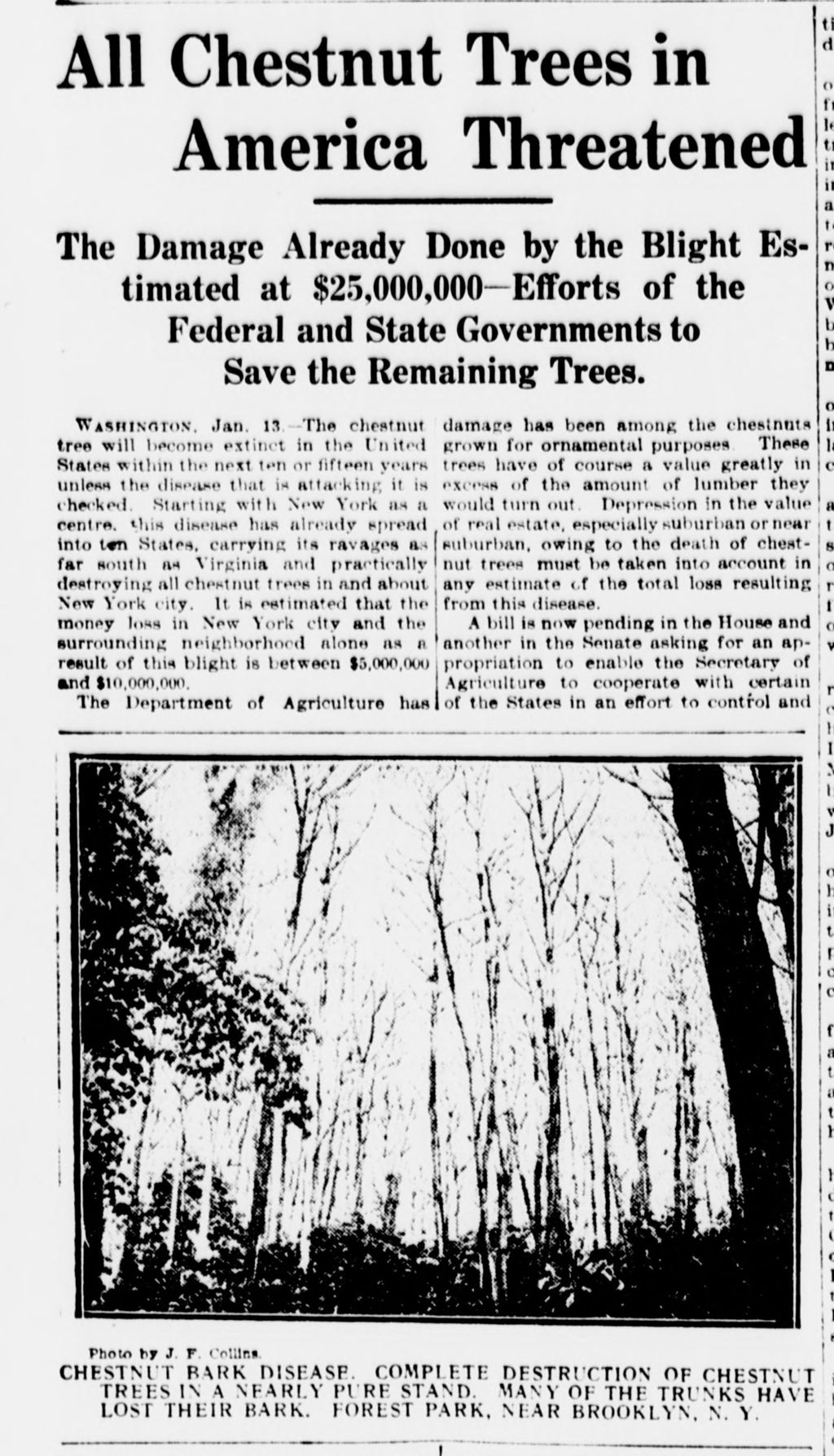Efforts to breed a blight-resistant hybrid began as early as 1930, but the real push to resuscitate the once mighty matriarch of Southern Appalachian forests began in earnest in the early 1950s. Then in 1980, The American Chestnut Foundation organized to put a sense of formality to the cause.
Barry Thacker, president of Coal Creek Watershed Foundation in East Tennessee, heads up a strip-mine reclamation project and has been using young American chestnut trees for years to help reclaim the stripped land.
“They like rocky ground,” he said. “Old strip mines have both sunlight and loose, rocky soil, and you can’t plant them in the forest, too much shade.”
Researchers intentionally scattered hundreds of test plots throughout Appalachia. Every variety of soil and climate condition and specialized habitat imaginable was sought out.
If one strain could get a foothold somewhere, then maybe researchers would be on their way to finding a blight-resistant survivor.
Over the years, they’ve tried spraying wild American chestnut saplings with fungicides, infecting them with fungus-killing viruses and burning large swaths of blighted trees in the hope of creating temporary blight-free mountainsides.
None of these showed promise of a final solution.
Creating a genetically engineered, blight-resistant tree would prove the best path forward.
Now, after nearly 100 years trying to bring the American chestnut back, a game-changer has emerged. An American chestnut named Darling 58, with one extra gene. This tree has proved to be blight-resistant and is expected to grow to maturity.
“It’s not a matter of if it will happen, but when,” American Chestnut Foundation Director of Communications Jules Smith said.
Before reintroduction on a national scale, several government agencies have an interest in how it’s managed. As of this year, the USDA and the EPA have signed off on this transgenic tree’s use in the wild. FDA approval is expected this fall.
Once full-scale planting begins, it will take 100 years for the tree to regain its proper place in the forests of Southern Appalachia. There is no guarantee any of them will ever reach maturity.
“We can’t claim victory until 100 years from now,” Thacker said.
The plan: Once the federal government releases blight-resistant, genetically modified American chestnut trees to the public, commercial nurseries will be free to grow saplings to sell to wholesalers, who will then distribute to neighborhood greenhouses and garden centers. Then individual landowners can incrementally reintroduce the trees across the Southern Appalachia landscape.
It will take a lot of labor to plant tens of thousands of individual saplings, far more than research institutes can provide. From there, wildlife, especially birds, will spread the seeds far and wide through their droppings. The best place to plant American chestnut trees is in rocky, mountain soil, where they thrive.
In the past, oaks and chestnuts could alternate. If one had a bad year, the other would take up the slack. With the chestnuts gone, mass crops became increasingly inconsistent, causing wildlife greater travel and competition for resources.
Since Southern Appalachia boasts one of the greatest diversity of trees on the planet others filled the gap: maples, poplars, hickories, pines, elm, ash and hemlocks.
But there was no substitute for the chestnut. It had become an icon of the resourcefulness, strength and endurance of people who carved out a living in these mountains and valleys.
So what happened?
A century ago, a blight of fungus, (Cryphonectria parasitica) believed to be unintentionally brought by trade ships from Asia, accessed the chestnut’s cambium, the thin layer of living tissue beneath the bark of trees.
It’s the cambium that creates the annual rings in a tree, showing the recent growth. The width of individual rings give evidence of how good growing conditions were in each year of a tree’s life.
It’s the cambium where the fungus sets up shop, feeding on sap carrying nutrients and water from the roots up through the trunk and branches to the growing leaves. Interrupting this process causes contusion-like sores called cankers.
The historic blight was one of the worst environmental disasters to strike North America. It was especially disastrous to the more remote parts of Southern Appalachia where sustenance farmers relied heavily on the American chestnut tree.
New to Southern Appalachia, this fungus caught the American chestnut with no natural immunity, leaving it defenseless to the cankers which robbed the tree of nutrients and water.
Only a simple miracle of nature, the ability to regenerate, would keep the species alive.
Because the fungus couldn’t reach beneath the soil, saplings would shoot up from the roots of the now dead trees. Always resilient and creative, nature gave the wild-growing American chestnut a chance to survive, but not yet thrive.
The wild-growing sapling clones, however fragile, gave foresters a pathway to restoration. If they could just create a blight-resistant American chestnut tree through crossbreeding.
This turned out to be much more complex because the fungus was widespread. Along with crossbreeding, many other strategies were tried to save the chestnut. After 90 years without success there was a recent breakthrough.
While the American chestnut tree is functionally extinct, returning it to its place remains very much a viable goal.

